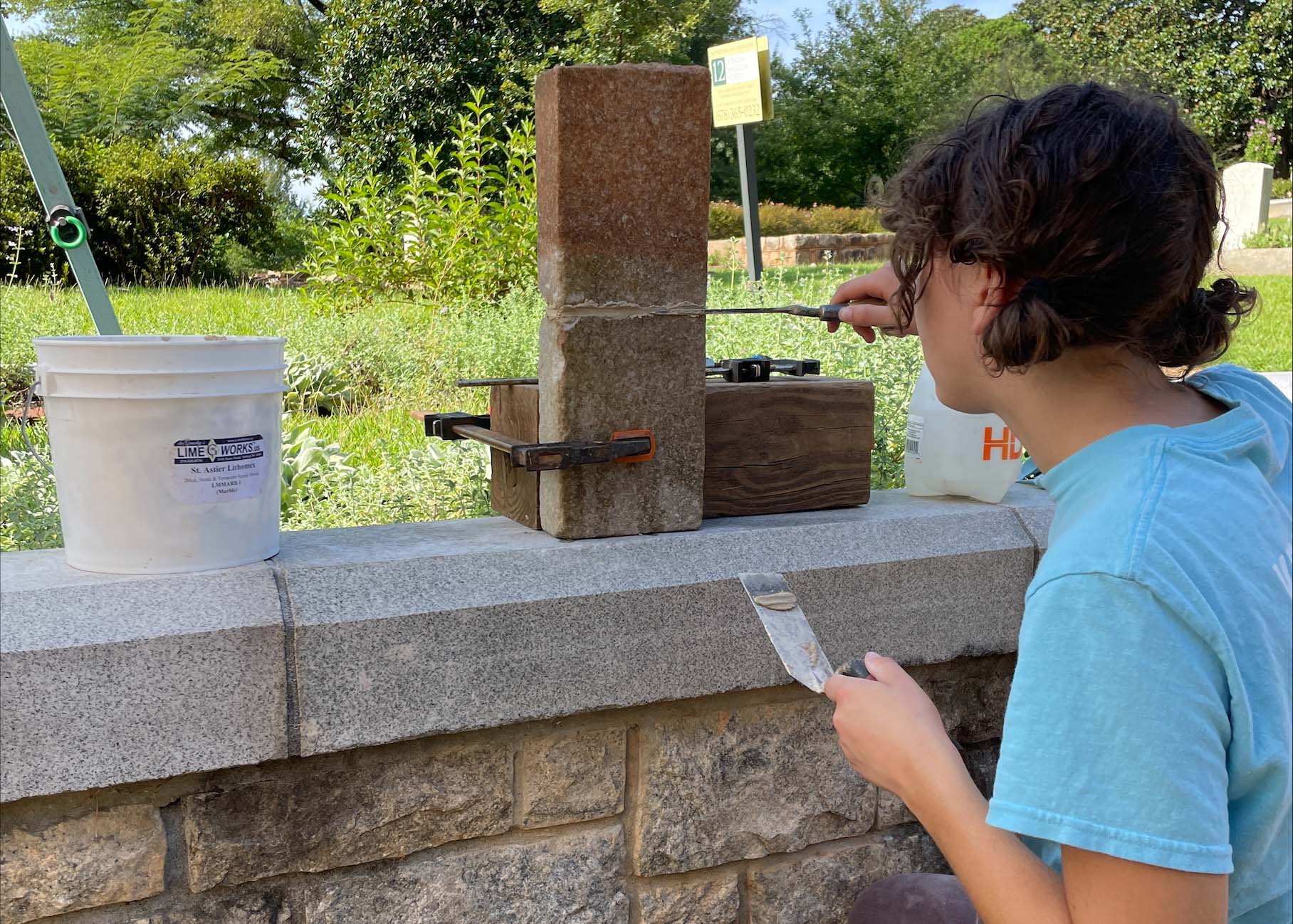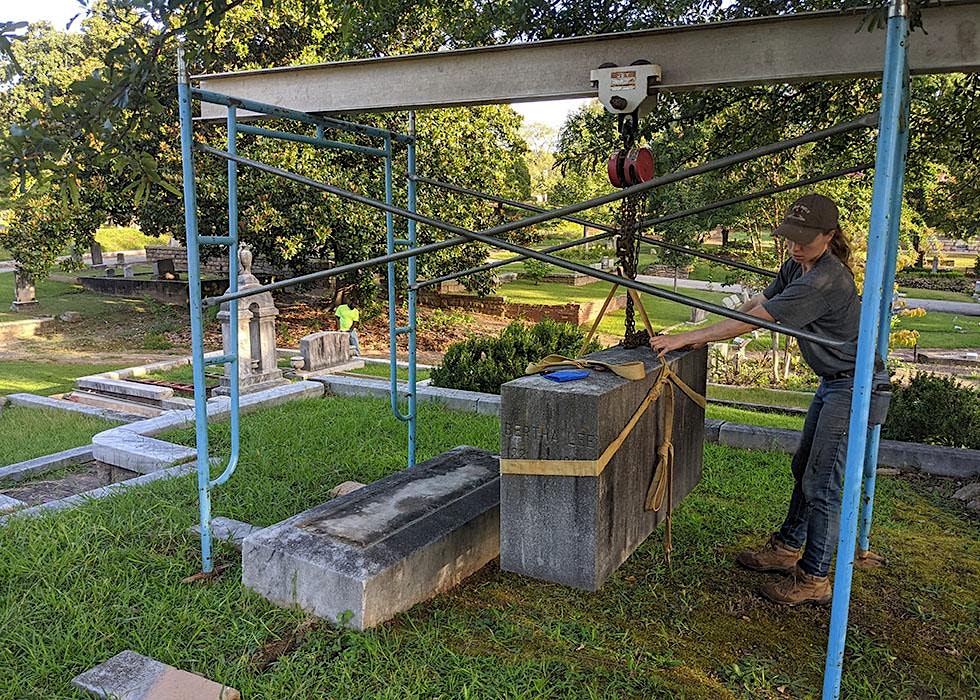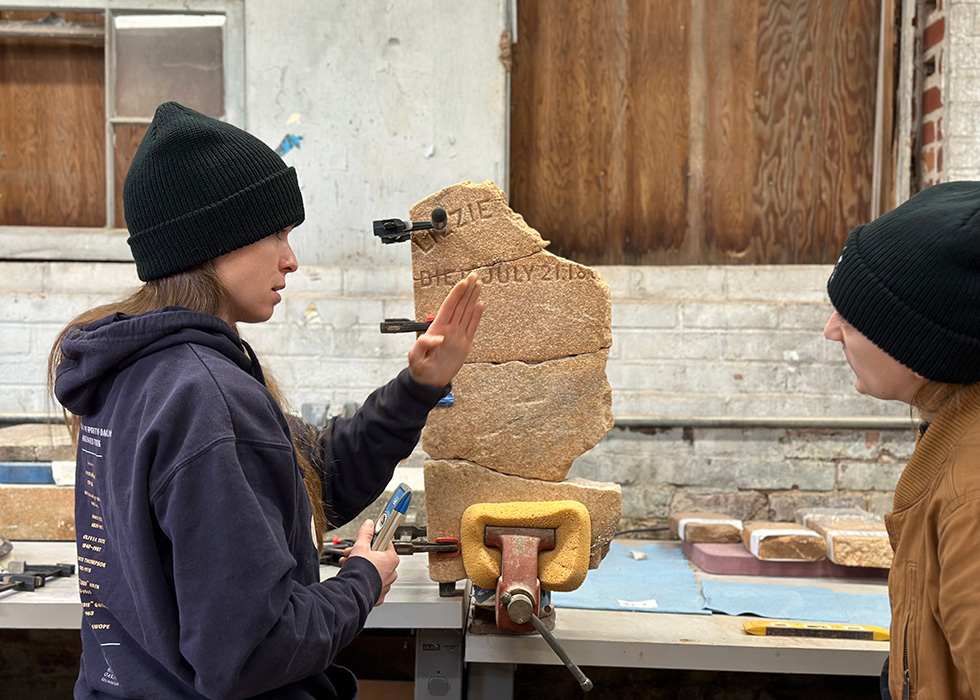
Historic Preservation Intern Ava Carubia’s Summer at Oakland
When I talk to friends from high school, many of our conversations eventually turn to our shared love of Atlanta, the city we grew up in. Usually our discussions are lighthearted and include topics such as food, music, and funny stories. But other times, we talk about how the city holds a considerable and complex history. In truth, the complex history of Atlanta is what drew me to studying history in college. By learning the hidden narratives about the city I had grown up in, I began to see history as a series of uncovered and unshaped narratives. I began to see that the truth could be easily obscured.
My love for Atlanta history is also what brought me back to Oakland this summer as a Historic Preservation Intern. As a kid, I spent a good amount of time in the cemetery. I remember school field trips, walks at dusk, and even attending a volunteer workday scrubbing grime off of old headstones. Before this summer, I had no experience with historic preservation. My knowledge of preservation was limited to an academic context, but I wanted to experience history in a more hands-on way. I wanted to uncover something that was obscured. I wanted to learn about the behind-the-scenes maintenance of a place I loved.
My 9-week internship mostly consisted of working alongside Oakland’s Workforce Development Hardscape Team, a group of 4 high school students learning basic masonry and preservation skills. For those six weeks, I learned how to reset headstones, lay bricks, and use scaffolding to move heavier headstones. Additionally, I conducted genealogical research about the family plots we worked in. After the students left, I focused on technical skills, such as headstone repair. While the summer heat could be intense, I enjoyed waking up early and spending time outside in the cemetery.
My favorite part of the summer was learning how to repair broken headstones. After the heavy rainstorms that swept through the city this summer, we discovered multiple broken headstones in different parts of the cemetery. Although it took me some time and patience to learn each step of headstone repair, with time I began to feel more confident. First, I learned how to use epoxy to piece together broken headstone fragments. Next, I used a dremel to widen gaps in the stone so mortar could fit between the two pieces. Finally, I mixed mortar, using the color of the original stone as a color guide. After learning how to apply the mortar using a trowel, I cleaned the excess mortar off of the fill and let it set overnight. Working on a smaller-scale, more technical project was satisfying. Additionally, it taught me to consider the more aesthetic aspects of preservation: using a dremel and mixing mortar to match stone color required a lot of attention. On the other hand, learning how to lay bricks proved to be much more challenging. To reconstruct a brick wall, we dug out the old bricks, cleaned them with chisels, and then used cement and mortar to fit the bricks together. The most difficult part of laying bricks was the sheer amount of time it took to do so.
Although I am not completely sure what I want to do after I graduate college next year, my experience at Oakland this summer has taught me basic skills in preservation and headstone masonry. Most importantly, I have learned why these skills are important in protecting shared space and telling accurate historical narratives, especially within the larger context of Atlanta.



